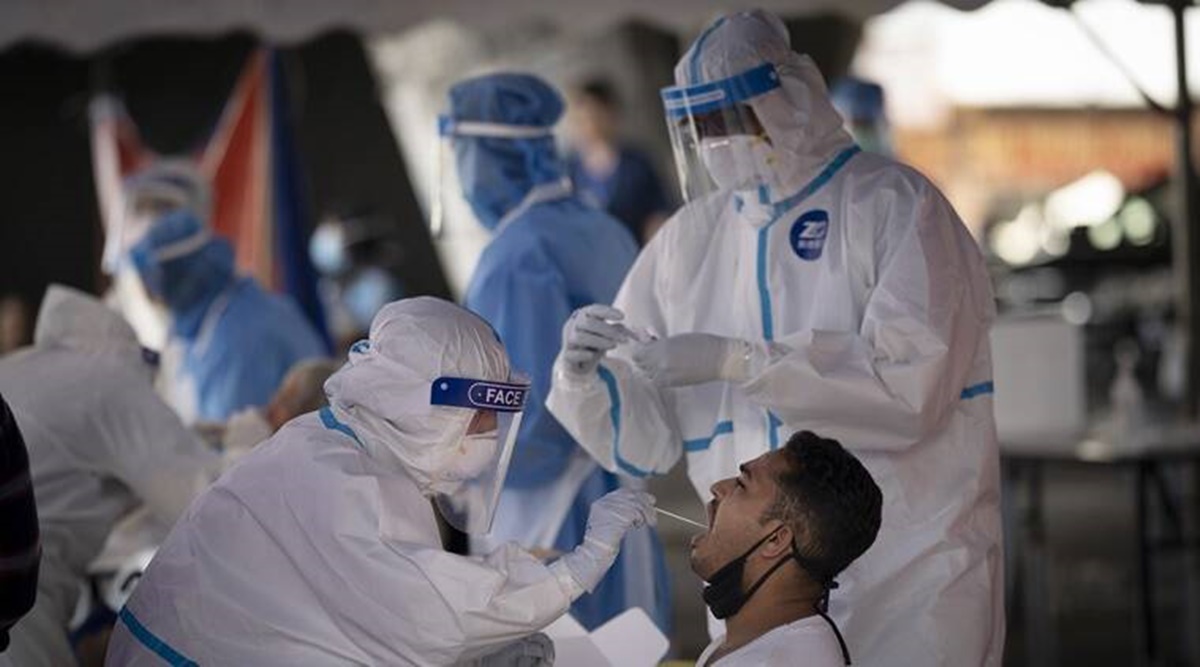 Officials from the BMC said more cases are being reported from high-rises than slums – around 90 per cent of the new cases are from buildings. (File)
Officials from the BMC said more cases are being reported from high-rises than slums – around 90 per cent of the new cases are from buildings. (File) The sharp increase in daily cases of Covid-19 and emergence of the new variant Omicron has led to rise in containment zones and sealed buildings in Mumbai. The spread of infection is higher in areas such as Bandra, Colaba, Fort, Malabar Hill, Andheri and Worli as the average growth rate in the last seven days has gone up.
On Saturday, Mumbai recorded 5,631 cases — highest in the last eight months. The positivity rate has shot up to 11.86 per cent out of the 47,472 tests conducted.
Officials from the BMC said more cases are being reported from high-rises than slums – around 90 per cent of the new cases are from buildings.
According to data from the Brihanmumbai Municipal Corporation (BMC) dashboard, there are as many as 11 active containment zones (chawls and slums) and 128 active sealed buildings in Mumbai as on December 30. Till December 25, there were zero containment areas and only 22 sealed buildings in the city with a doubling rate of Covid cases of 1,139 days.
Containment zones are created in slums or chawls with high population density to stop the virus from spreading out of the area. Similarly, if there are five or more cases reported in a building, it is sealed to contain the spread of the virus.
Data shows that the highest number of containment zones – seven –is in L ward (Kurla) which has the maximum population of people living in slums or chawls. Three containment zones are in D ward (Malabar Hill, Grant Road) and one in G-south ward (Worli).
Of the 128 active sealed buildings, the highest — 55 — are in D ward comprising the plush areas of South Mumbai, including Raj Bhavan, Kamala Nehru Park and Babulnath Temple area. As many as 28 sealed buildings are in K-west ward (Andheri, Jogeshwari) and nine in A ward (Colaba, Fort).
Apart from these, there are 3,020 active sealed floors across the city.
“Areas like Bandra, Colaba, Malabar Hill, Worli and Andheri are registering a rise in cases. The weekly growth rate of Covid cases is more than the overall average of Mumbai’s 0.20 per cent. It shows that the transmission is high among buildings. Everyone needs to take more precautions since this wave is spreading rapidly,” said an official from the Health Department.
According to data, H-west ward has average Covid case growth rate of 0.45 per cent, followed by 0.38 per cent in A ward and 0.32 percent in D ward.
In the last 15 days, active cases of Covid-19 have seen a jump of more than six times from 1,797 on December 15 to 11,360 cases as on December 31. The BMC, on Friday, said that 55 per cent of new cases are of Omicron.
Data shows that about 50 per cent of active cases are from seven wards that comprise areas like Andheri, Jogeshwari, Malabar Hill, Grant Road, Sion and Worli.
- The Indian Express website has been rated GREEN for its credibility and trustworthiness by Newsguard, a global service that rates news sources for their journalistic standards.

